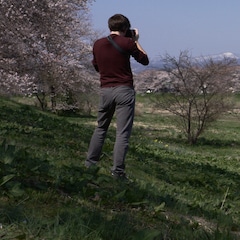Deep Dive Kanto Day Trips
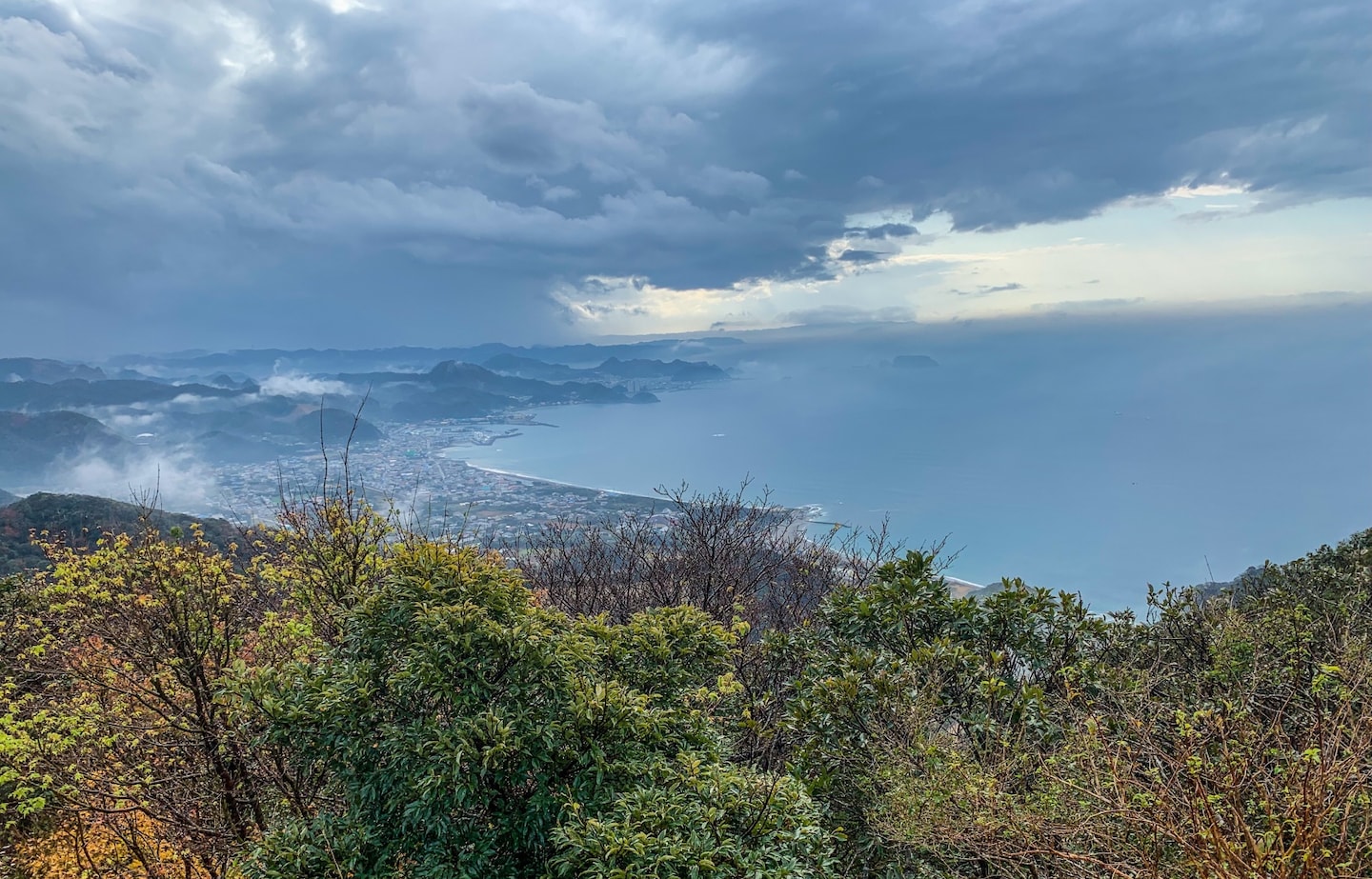
Visiting Japan? You're guaranteed to spend time in Tokyo. There’s so much to do in the city you could easily spend a lifetime just scratching the surface. But if you want to see another, more local side of the country, you don’t have to go very far to do it! We'll show you how to branch out from the city with some fun-filled day trips!
By Nicholas RichTokyo
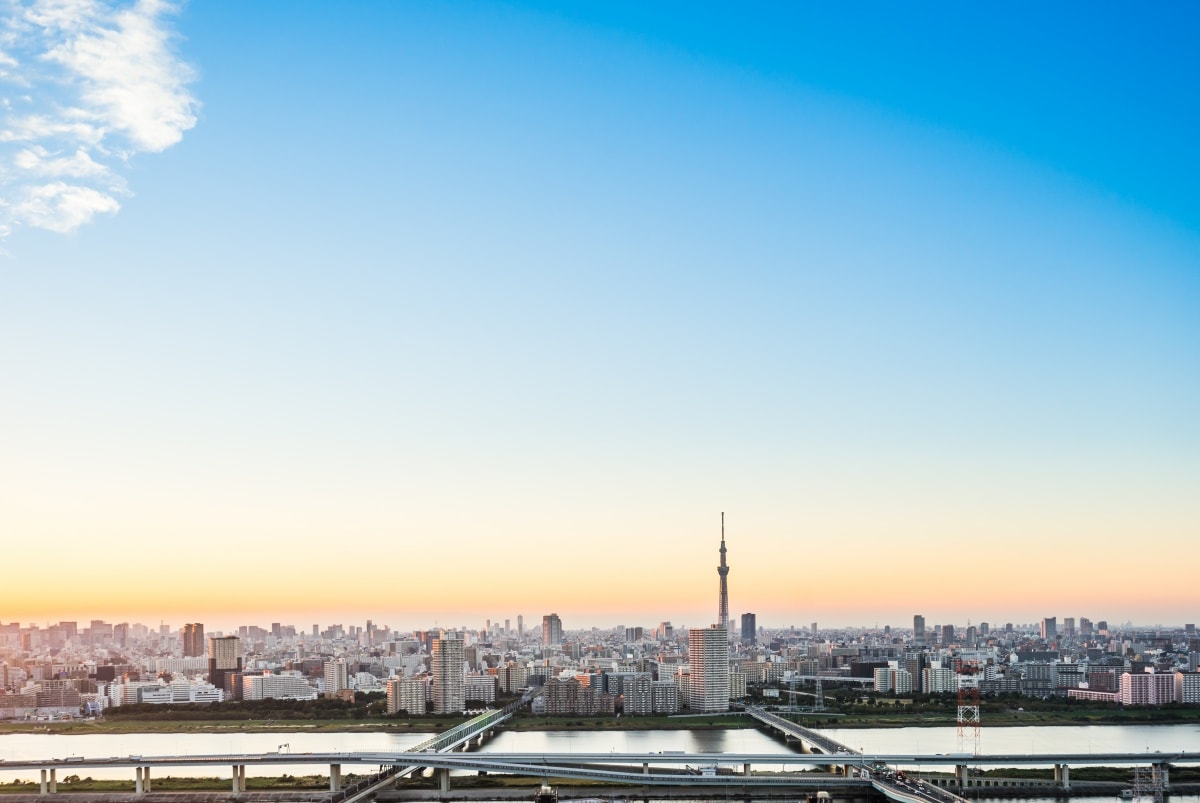
Japan’s iconic metropolis is chock-full of things to do, so you’re pretty spoiled for choice! If you want to make the most of your time on any particular day, it’s best to focus on a specific area, and dive in as deep as you can. Here are some awesome options of must-visit spots near a few of Tokyo’s most popular neighborhoods.
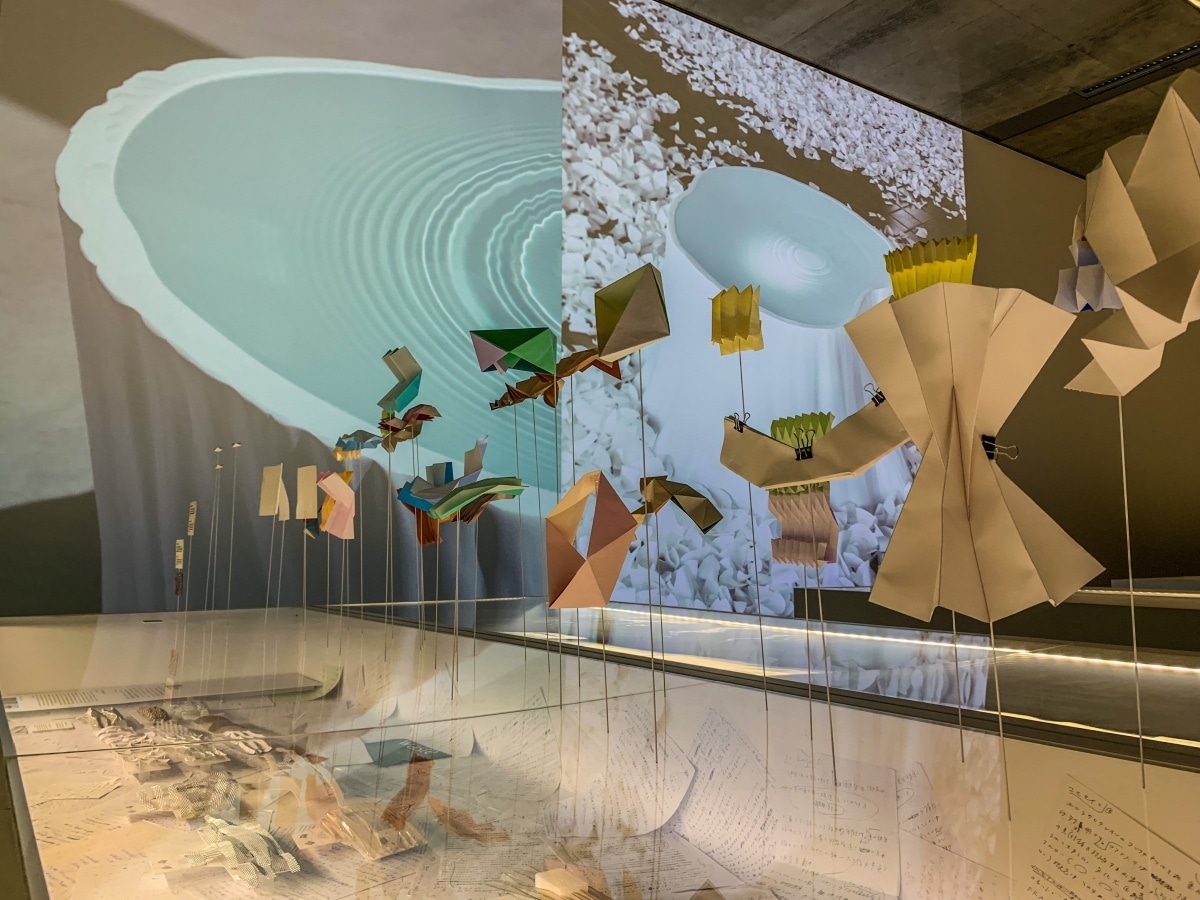
21_21 DESIGN SIGHT
Located in Tokyo Midtown, 21_21 DESIGN SIGHT is more than a museum; it’s an institution dedicated to showcasing every aspect of the art of design, and it does so by highlighting the works of some of Japan’s most prolific artists, architects and designers. Everything in the building is meticulously curated, from its impressive rotating exhibitions down to its very logo—20/20 vision is used to describe perfect sight, and the 21_21 aims to show everyone who visits works that are even more perfect!
Please note that the above photo is of the exhibit "Secret Source of Inspiration: Designers' Hidden Sketches and Mockups," which will be on display from November 2019 to March 2020.
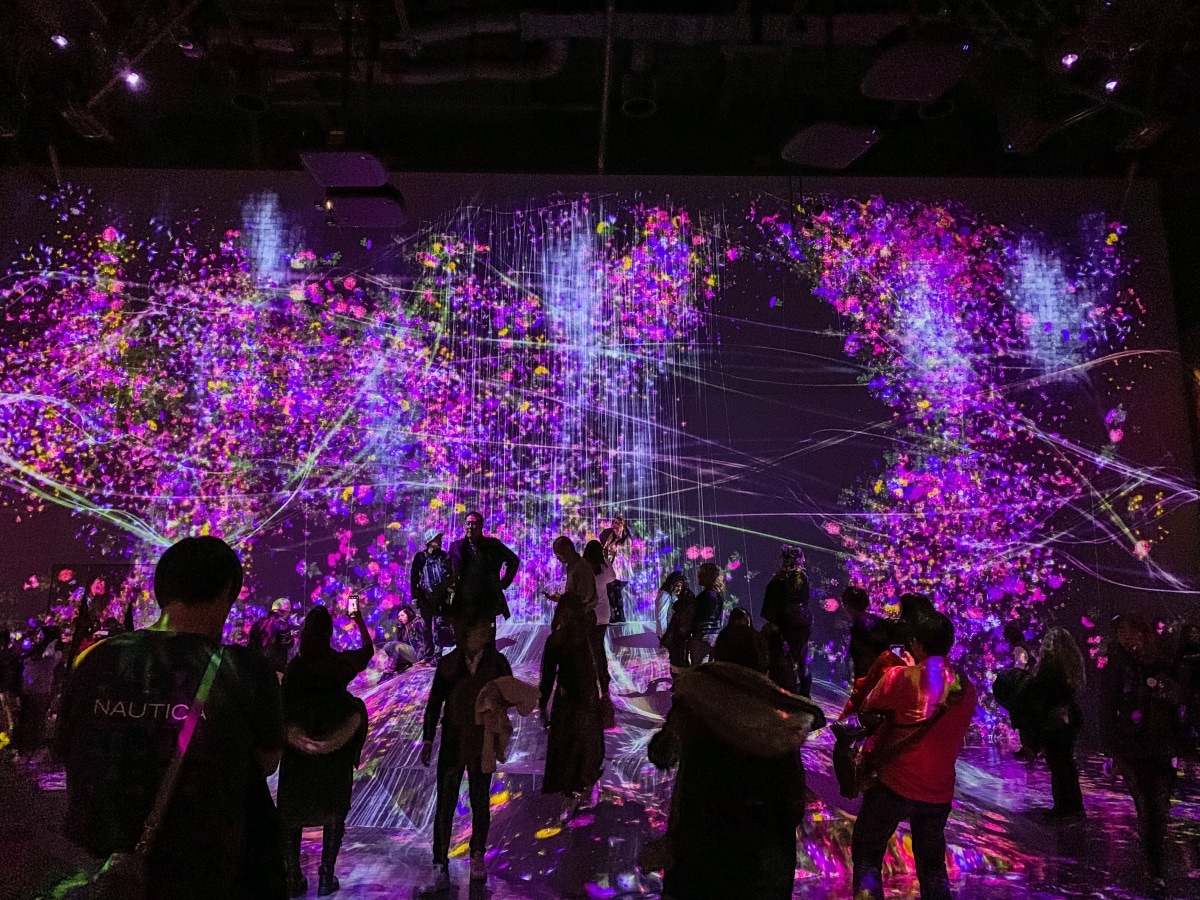
teamLab Borderless
Perhaps a hotspot that needs no introduction, a visit to Borderless—the permanent exhibition housed in the MORI Building Digital Art Museum—by the visionary digital art collective teamLab is more akin to Alice’s journey to Wonderland than a typical visit to a museum. Every room is a feast for the senses, be it a maze of cascading, colorful LED lights, animals or traditional drawings come to life and marching across walls, a rainstorm of flower petals or a digital waterfall! And that’s just the tip of the iceberg. Many of the interactive displays are designed to bring out your inner child, and it’s SUPER easy to spend hours here, so come early and get ready for fun!
We highly recommend buying tickets in advance; Borderless has been extremely popular since it opened in 2018, and it shows no signs of slowing down.
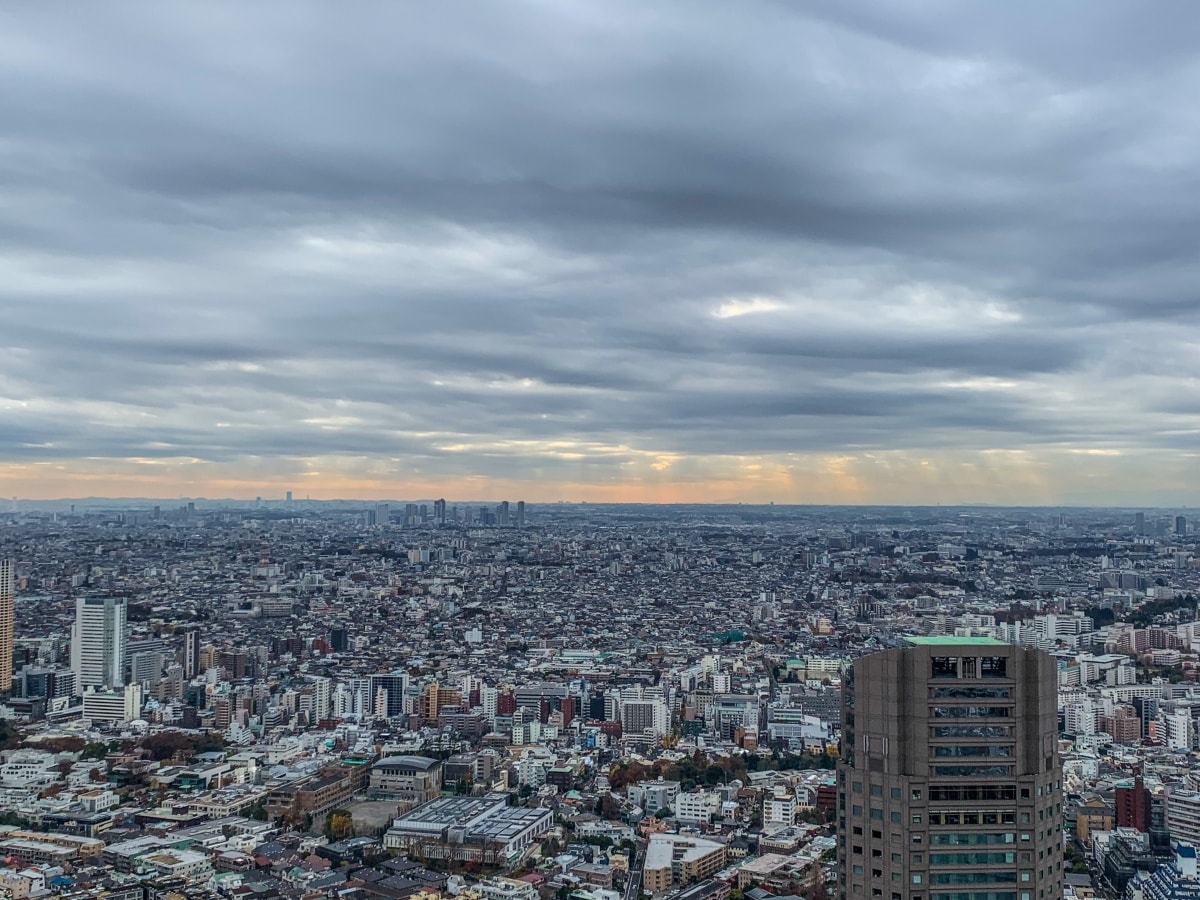
Shibuya Scramble Square
A mecca of youth culture and shopping, Shibuya has slowly but surely been refining itself, and transforming into an area with quite a bit of sophistication behind its towering buildings and neon signs! Perhaps the best example of that transformation is the Shibuya Scramble Square. Directly next to Shibuya Station and towering at a height of 230 meters, the building is super easy to notice, and even easier to find. There are over 200 shops inside, but the real highlight is Shibuya Sky. An elevator from the 14th floor rockets visitors up to the 46th floor in a matter of moments—from there, you can head out to the rooftop, which offers a panoramic, 360-degree view of the city and all its surroundings. The scenery is, quite frankly, breathtaking, and more than worth the cost of entry (1,800).
Please keep in mind that tripods, selfie sticks, and other items aren’t allowed on the rooftop.
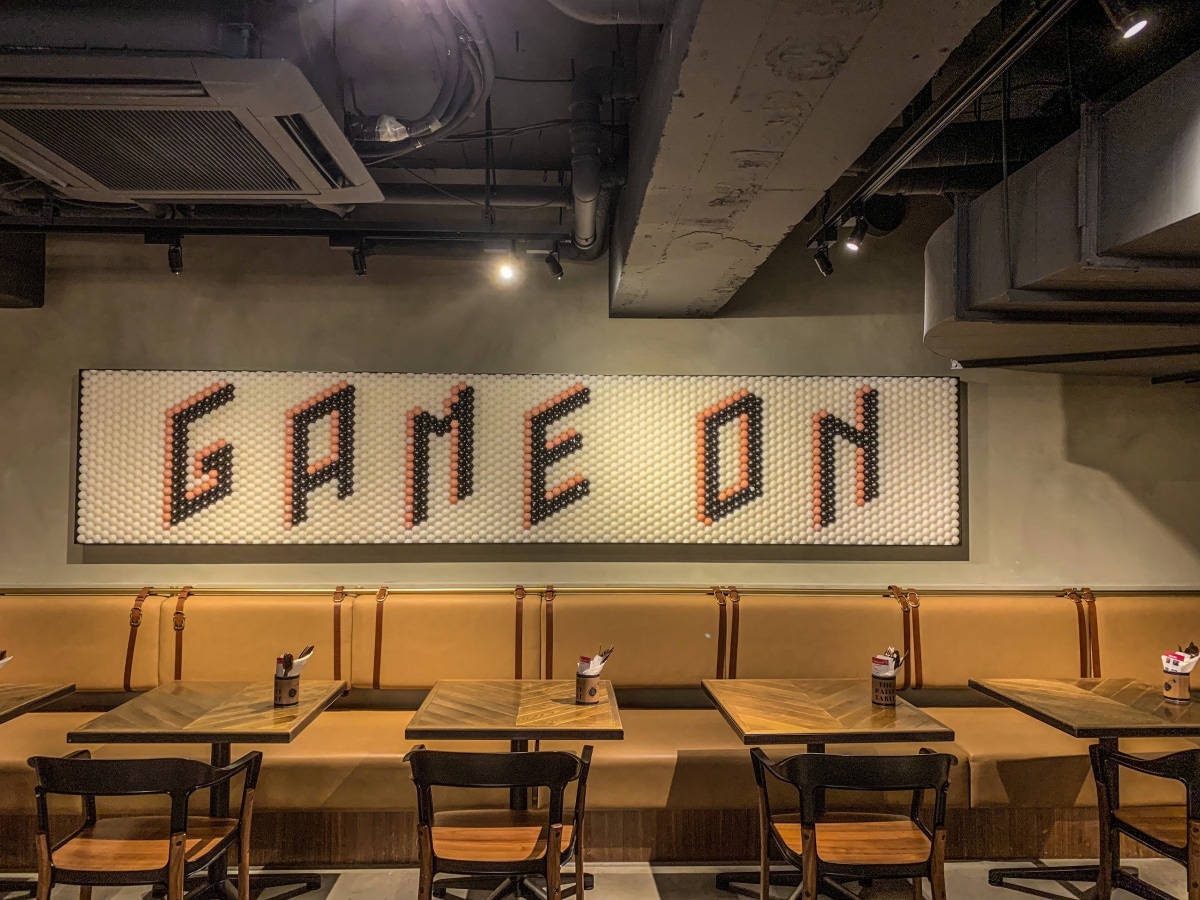
Offbeat Eateries
Tokyo has no shortage of culinary options available, especially if you’re looking for something a little more interactive.
Take T4, for example, a restaurant that combines Italian/Japanese food with the spills and thrills of table tennis! The food menu is extensive, and there are even fun, table-tennis-themed drinks available, but obviously the real highlight is the full-size ping pong table in the center of the room! There’s a backroom that can be reserved for bigger parties, which comes equipped with a mini ping pong table as well. We recommend coming at lunch (since most of the clientele are on their lunch breaks, there isn’t as much competition for the table) if you really want to game, but the ambiance at night is super fun too!
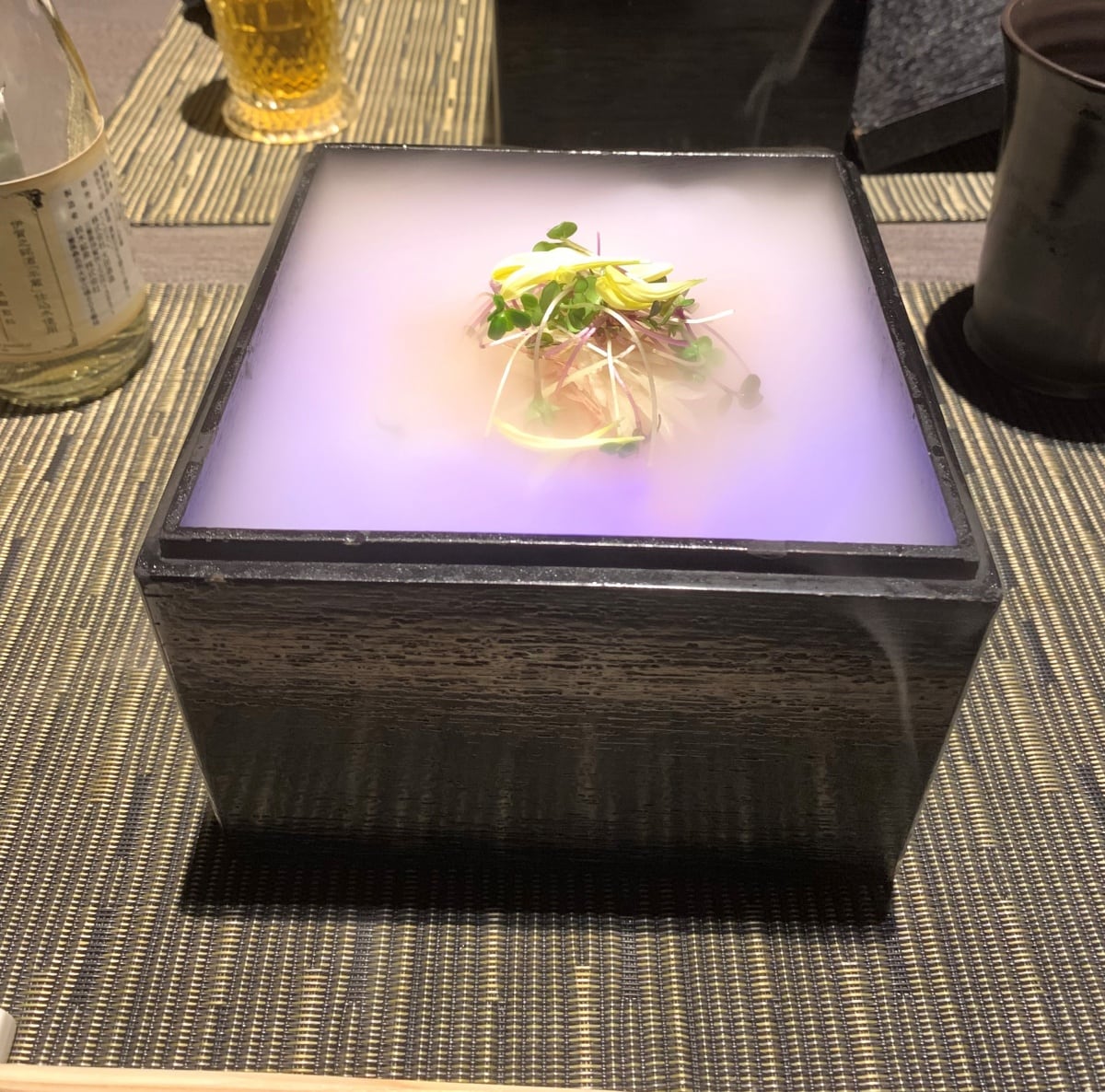
If you’re looking for a spin on something traditional, there’s no better place to check out than NINJA SHINJUKU. While the theme might sound a little corny, this restaurant goes ALL IN! The drinks all have a fun ninja twist, but the presentation of dishes is where the shinobi magic really takes hold; each course is a feast for the eyes and stomach. You can even get a cool tableside show after your meal—the illusions of the ninja master are sure to confound and delight!
Kanagawa Prefecture
With a day well-spent in Tokyo, it’s time to venture a little further afield. There’s no better place to start than Kanagawa Prefecture, Tokyo’s southern neighbor. It’s home to big cities like Yokohama, Japan’s second largest city (after Tokyo), and Kawasaki, as well as beautiful coastal areas like Japan’s old capital, Kamakura, and the lovely island of Enoshima.
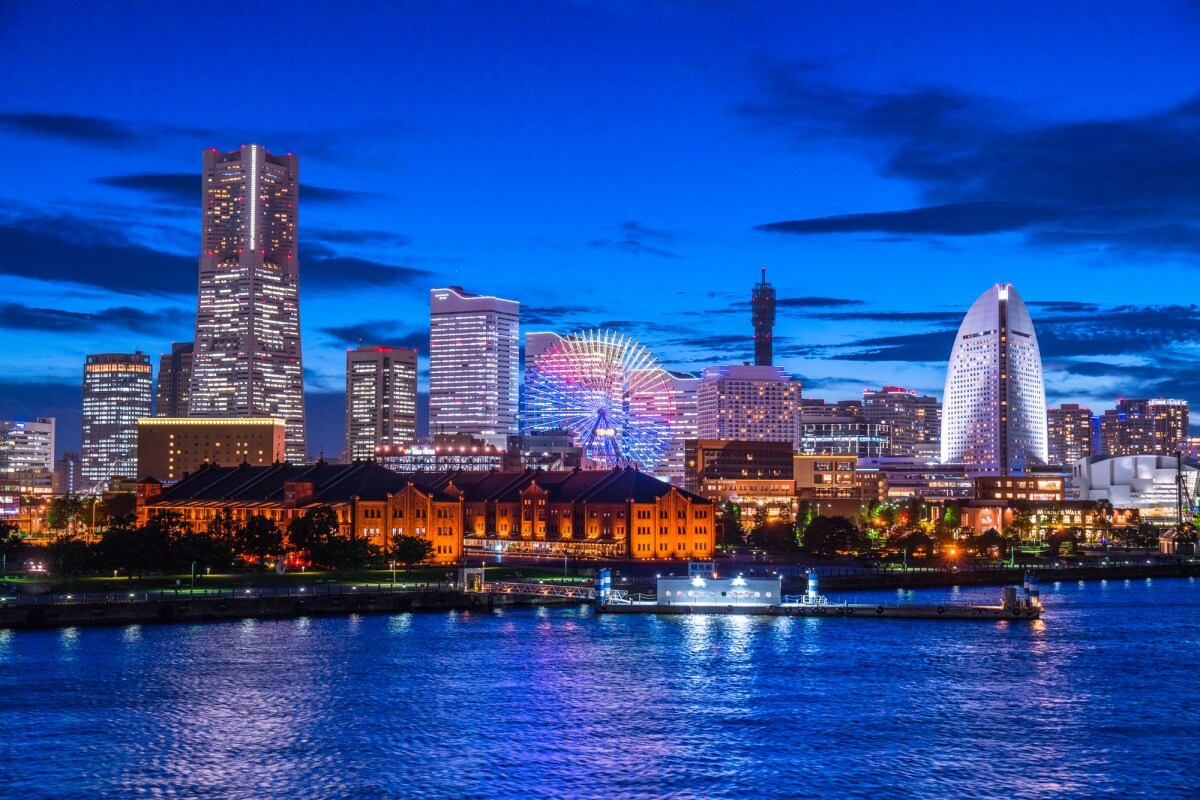
Yokohama
Like Tokyo, it takes way more than a single day to really get to know a city like Yokohama. But there are plenty of good places to start! Stroll down to the Minatomirai area of the City by the Bay, and get hungry, because our first stop is a place with a deep connection to one of Japan’s most iconic foods!
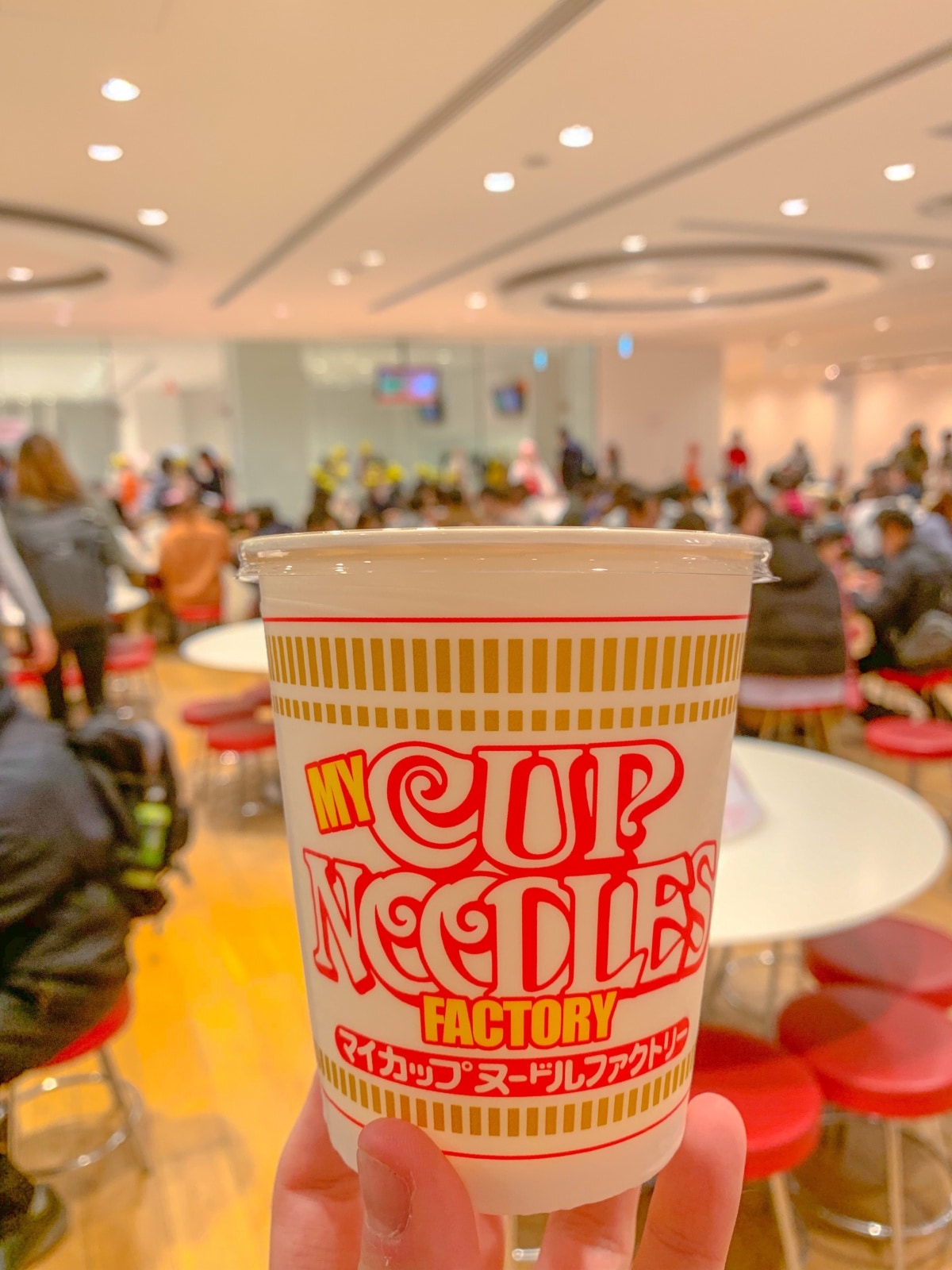
CUPNOODLES MUSEUM
Another interactive museum, the CUPNOODLES MUSEUM is a testament to the life and works of Momofuku Ando, the founder of Nissin Food Products and inventor of Chicken Ramen, the world’s first instant noodle! Many of the displays details of Momofuku Ando’s life, and the trials and tribulations of trying to perfect the recipe for instant noodles, as well as the story of the Nissin brand as a whole. The walls of one room are covered, floor to ceiling, in different iterations throughout the years, and various flavors from countries from around the world! There’s also an extensive gift shop, a Noodles Bazaar, where visitors can sample flavors from all over the globe, and more. The highlight has to be the My CUPNOODLES Factory, a bustling factory where you can create your own variation of classic instant noodles; you can stretch your creativity and design your own container, choose from four classic soup bases, and four toppings from 12 tasty options! It’s an awesome souvenir to take back home with you.
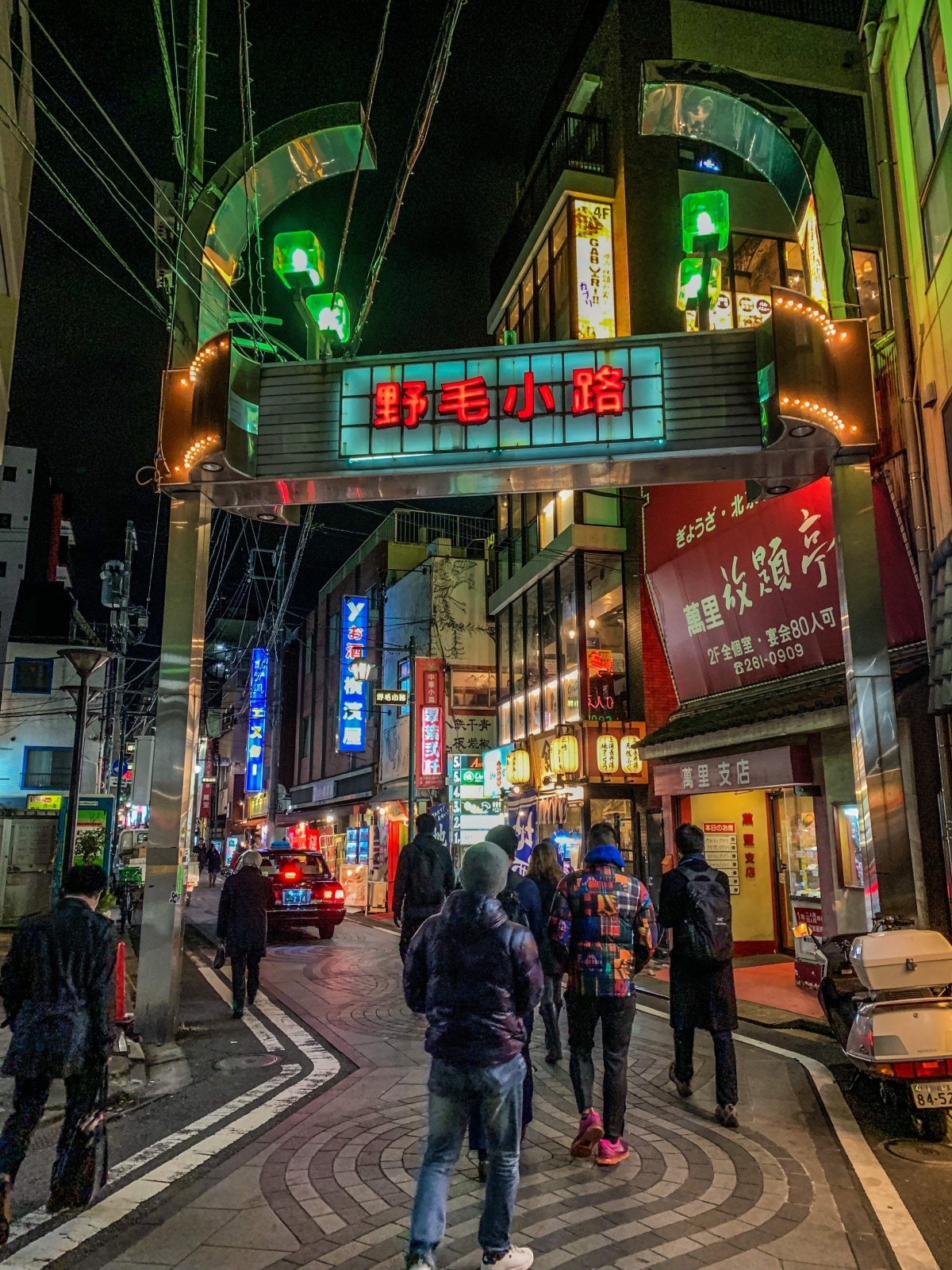
Bar Hopping in Noge
For a taste of classic, old-style Japanese nightlife, there’s perhaps no better place to go in Yokohama than Noge. Home to literally hundreds of small drinking establishments and eateries, you’re sure to find a place that suits your fancy among Noge’s winding streets. While each place is unique, they’re all characterized by reasonable prices, eclectic menus, and a retro atmosphere. There’s a reason Noge is a favorite to students and salarymen alike; you can have a great time without putting a huge dent in your wallet.
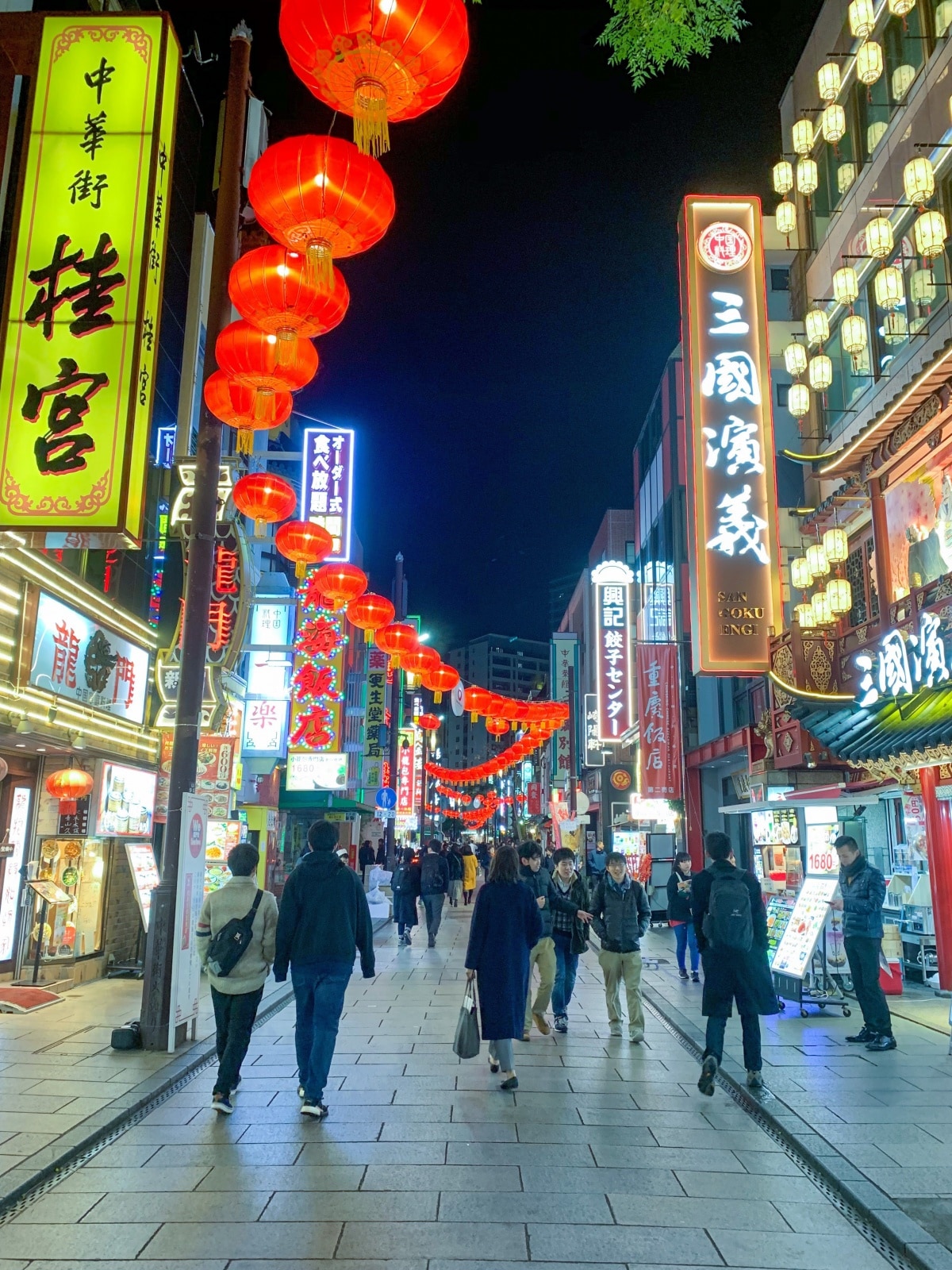
Chinatown
No visit to Yokohama would be complete without a visit to Chinatown! One of the world’s largest, these lantern-lined streets are packed with stalls and kiosks selling delectable street food, not to mention full-blown restaurants and bars. Beyond that there are shops, and incredible temple dedicated to the deified Chinese general Guan Yu, and more! Like Noge, the atmosphere at night is completely different from the daytime, which makes frequent visits an exercise in discovery.
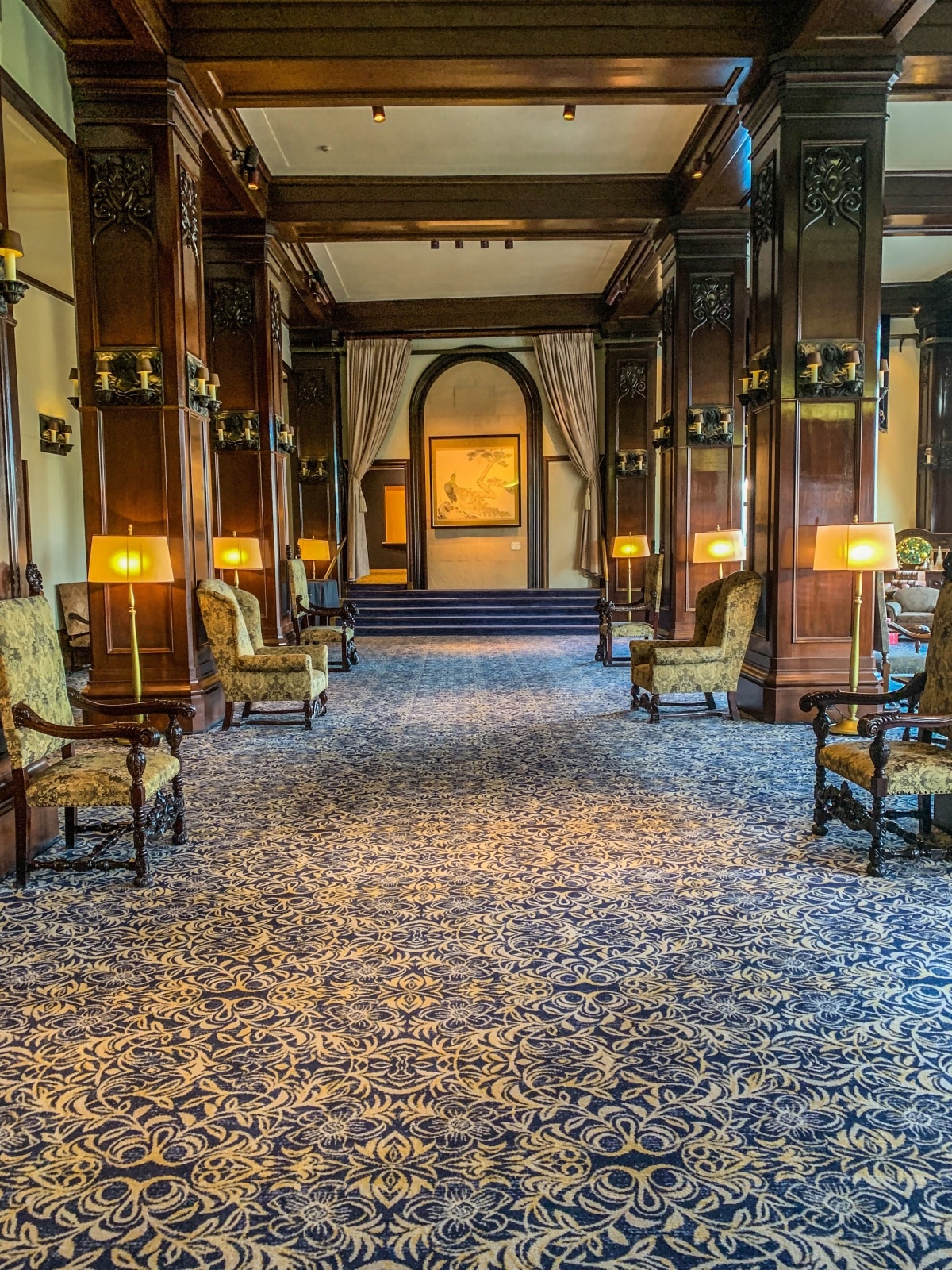
Stay in Historic Style
With so much to explore (and bar hopping on the menu), it makes sense to stay overnight in Yokohama. If you’re looking for a hotel with an incredibly historical ambiance that is close the Chinatown and the harbor, look no further than Hotel New Grand.
Opened in 1927, this hotel has hosted a number of historic figures; General MacArthur, Charlie Chaplin, and Babe Ruth, to name a few! The main building has been lovingly maintained, with banquet halls and other fixtures that are reminiscent of Japan of yesteryear.
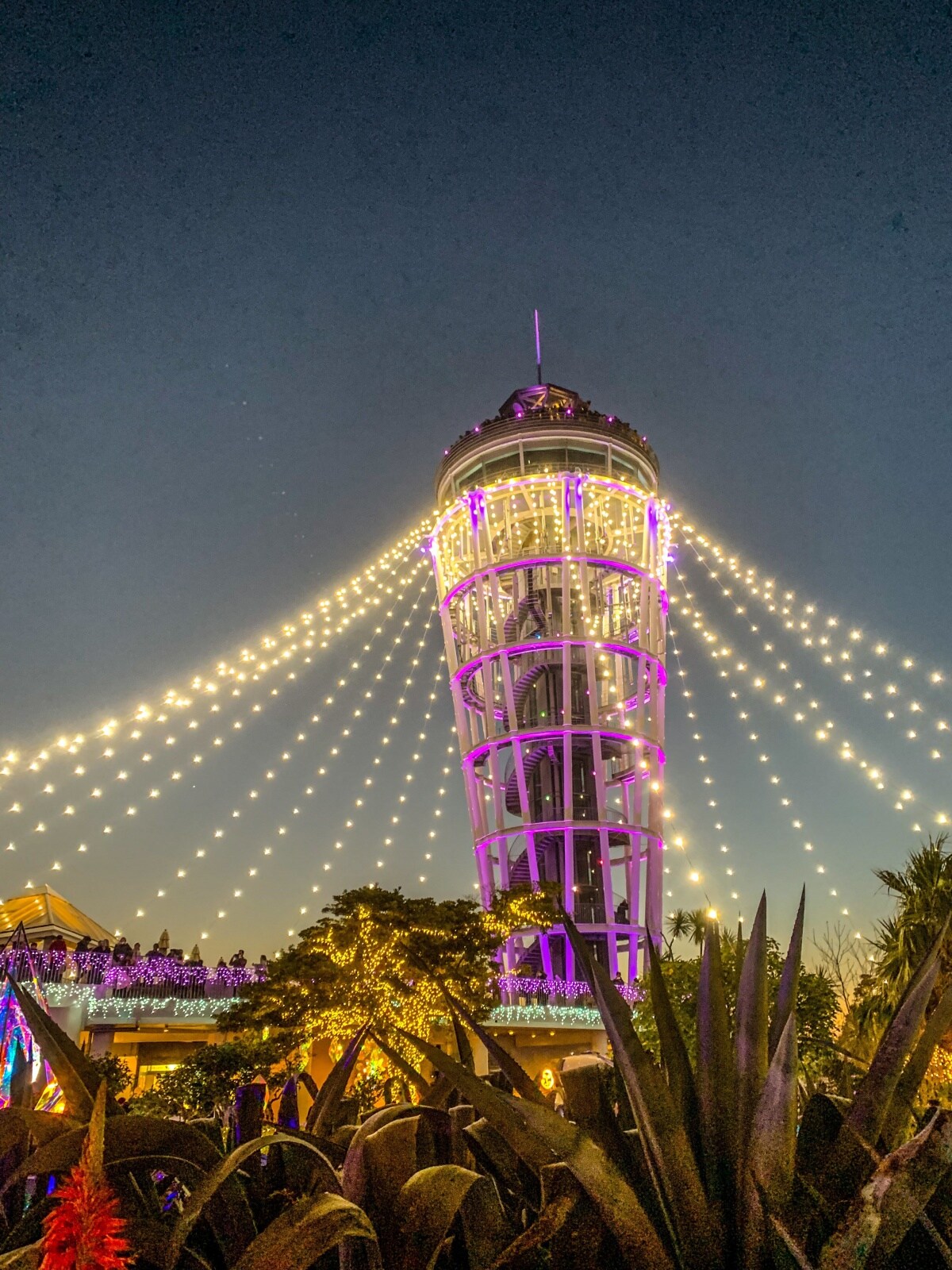
Enoshima
Enoshima is just a stone’s throw from Kamakura, Japan’s old capital in Kanagawa Prefecture. This small island is connected to the mainland by a bridge, and in warmer months it is a beach bum and surfer’s paradise! It is also the location of Enoshima Yacht Harbor, which was used in the 1964 Tokyo Olympics, and will be a venue for the upcoming games in summer of 2020.
Beyond fun in the sun, the island is also home to some very cool cultural and culinary activities, and the perfect place to while away a day. Here are just a couple highlights waiting for travelers who pay this quaint seaside area a visit.

Fresh Seafood
It should come as no surprise that Enoshima has access to a bounty of fresh and delicious seafood. Of particular note is shirasu, or whitebait. These tiny fish might look a bit strange, but they pack a big punch of savory flavor, and are delicious even when served simply, over rice. Pair it with some tender cuts of tuna and you’ve got an incredible meal you won’t soon forget! We recommend a visit to Tobbicho, but go early, because it’s very popular.
If you’re a bit more selective, the small open-air market and shopping street leading up to Enoshima Shrine are great options for munching as well; fresh, grilled octopus, rice crackers made with giant prawns, and more!

Enoshima Shrine
Technically a collection of three separate shrines, the buildings associated with Enoshima Shrine are scattered around the island, starting with the bronze torii gate leading up to the nakamise shopping street. The main shrine is dedicated to the Goddess of Fortune, Benzaiten (who is actually the only female of Japan’s seven fortune deities), and you’ll find several statues around the complex. One custom associated with Benzaiten is zeniarai, the washing of money—doing so is said to bring good luck!
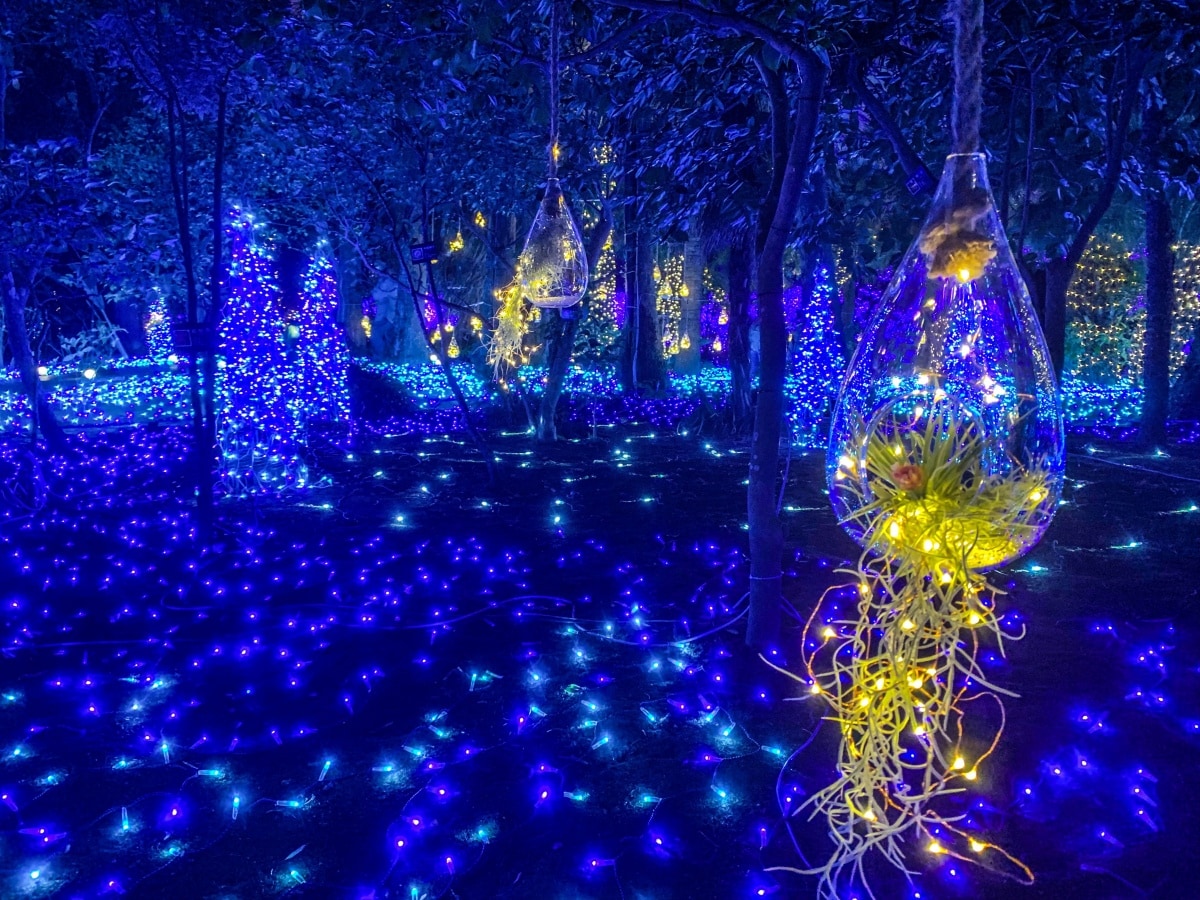
Samuel Cocking Garden
This botanical garden was established in the 1862 by Samuel Cocking, a wealthy British trader and merchant who once owned property on Enoshima. The grounds of the garden cover some 10,000 square meters, and houses a variety of plants from around the globe. There are various events hosted at the garden throughout the year, and one of the best times to visit is in winter—not only do they have a display of tulips, there’s also an illumination event that is, quite simply, magical.
Centered on the Sea Candle Lighthouse Observation Tower (which offers great views of Mount Fuji on clear days), at 5 p.m. the lights come on, and the garden transforms into a wonderland of gorgeous LEDs. There is a small fee to enter the garden (¥200), but that modest sum is MORE than worth it.
Saitama Prefecture
Another option is to head northwest of Tokyo, to Saitama Prefecture. Easily accessible from central Tokyo by train, Saitama is home to the historic townscape of Kawagoe, a museum dedicated to one of Japan’s most alluring traditional living arts, and some truly incredible shrines.
Because many of the sites on this itinerary are quite close to each other, it’s the perfect opportunity to cycle around the town and really soak in the scenery!

Kawagoe Kumano Shrine
After exploring the retro streets of Kawagoe, pay a visit to the nearby Kumano Shrine. Although small, this humble shrine has deep connections to the history of Japan. The shrine is covered in motifs of a three-legged crow; this is the yatagarasu, and legend goes that it was this crow that convinced Japan’s first emperor to establish his kingdom.
In addition to the lovely shrine complex, visitors can enjoy the daunting, somewhat painful but ultimately refreshing experience of stepping on a path of rocks that is said to function like acupuncture! There’s also three crystal balls, where visitors can learn their fortune from the mysterious yatagarasu.

Omiya Bonsai Art Museum
The world’s first publicly run bonsai museum, the Omiya Bonsai Art Museum opened in the city of Saitama in 2010 to promote the traditional industry and culture of bonsai cultivation, both locally and internationally. While many international visitors might be familiar with the concept of bonsai, it is here that one can truly come to understand the philosophy and artistry behind it.
As detailed by the lovely exhibition of specimen, bonsai are microcosms of the majesty of nature captured in a single pot. Although small, when appreciated from various angles, the shrubs and trees are reminiscent of the entire ecosystem of mighty primeval forests, each specimen with its own unique beauty. The museum has some trees that are thought to be a thousand years old, and it’s hard not to be in awe of such ancient beauty.
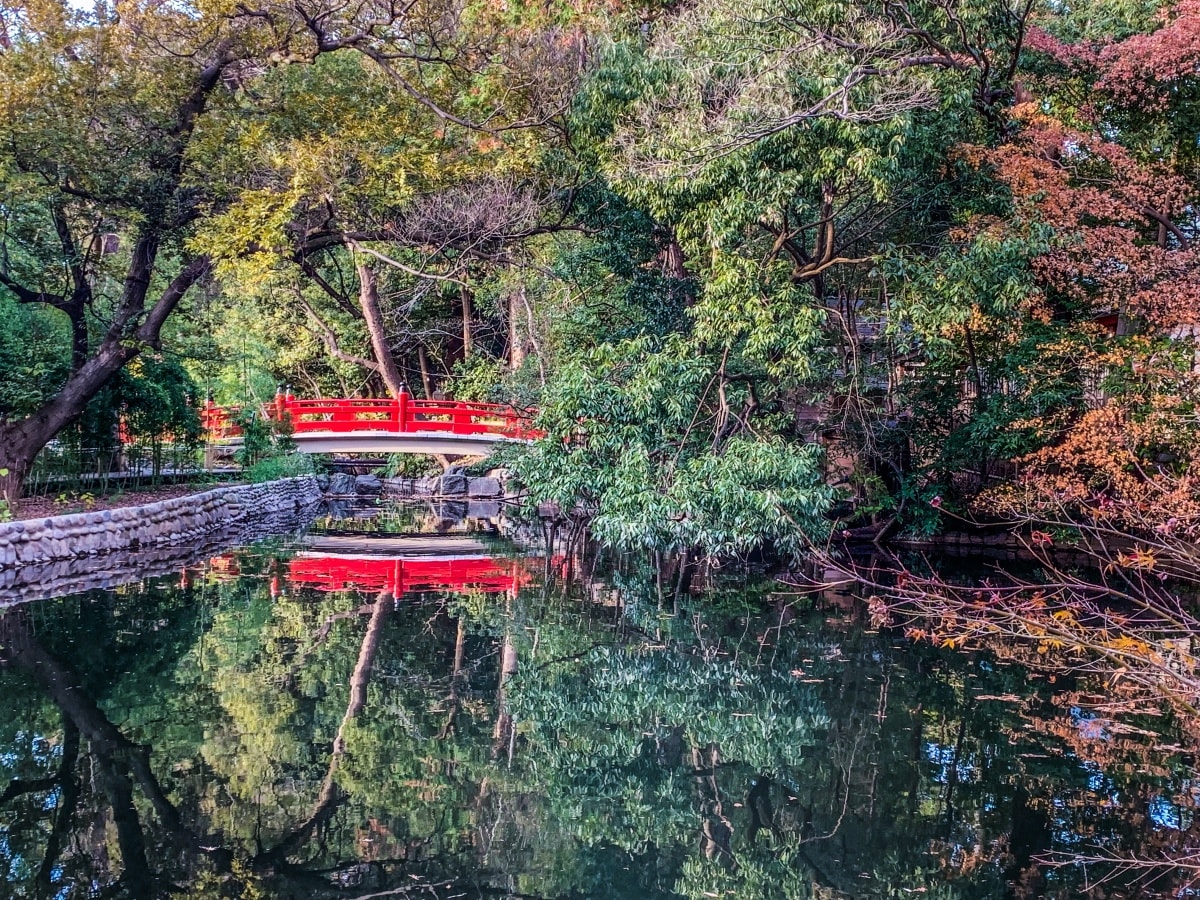
Musashi Ichinomiya Hikawa Shrine
The former head shrine of the region back when it was referred to as Musashi Province, the Musashi Ichinomiya Hikawa Shrine boasts a history of over 2,000 years. Said to house the deity of storms and seas, Susano-O, the entrance to the shrine is heralded by a massive vermillion torii gate that separates it from the surrounding townscape, and the grounds themselves are covered in lush greenery, complete with gentle ponds, as well as multiple shrine complexes.
The area is usually quite tranquil and sleepy, the perfect place for quiet contemplation or a relaxing stroll. But there are a few periods of the year, like New Year’s, when visitors flock from all over for the first shrine visit of the year.
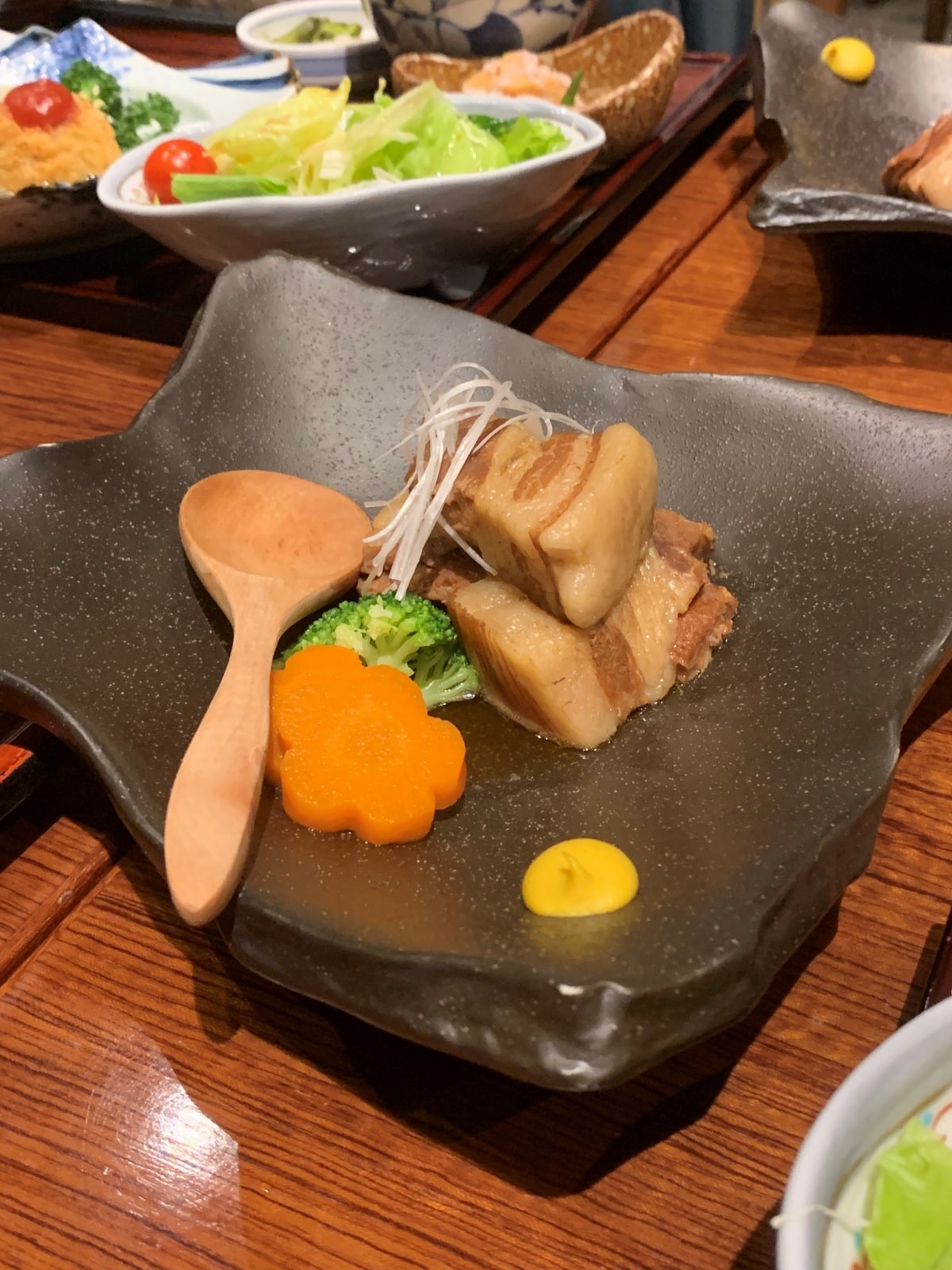
Sake & Soul Food
All of that travel is sure to work up an appetite, especially if you’re cycling. For a sample of hearty, traditional fare, head back to Kawagoe and stop in at Koedo Kurari. The restaurant inside this former sake brewery specializes in dishes made from local sweet potatoes, as well as other dishes like succulent pork belly, and is an excellent place to sample some of the local sake.
Fukushima Prefecture
Even further north than Saitama, Fukushima is nevertheless just as easy to access! A little over an hour away by bullet train, this sprawling prefecture is a great place to dive deep into Japan’s samurai history.

Aizuwakamatsu
Known as the “Samurai City,” Aizuwakamatsu is a place that we’ve written about many times before. With deep ties to the transitional period between the iconic, samurai-era Japan romanticized across the globe and the modern country it has become, this small but proud town is always worth a visit.
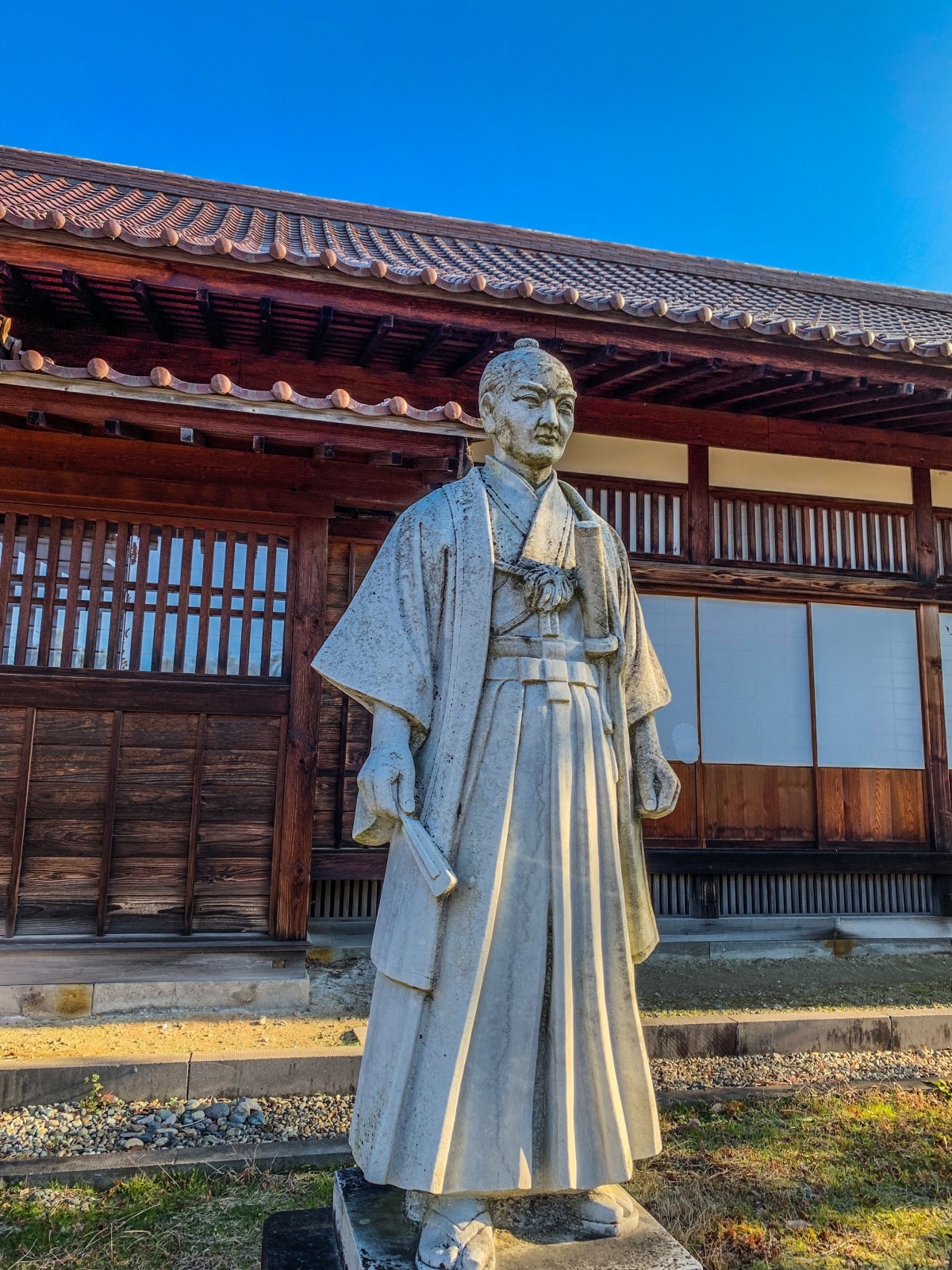
Aizu Nisshinkan
For a deep dive into samurai culture, there’s perhaps no better place to visit than the Nisshinkan. This facility was a school for the children of samurai, where they would learn how to conduct themselves befitting their stature, and study the martial arts that went hand-in-hand with the samurai way of life.
In addition to learning about the way of life of the students who once wandered these grounds, visitors can enjoy a number of unique experiences. One highlight is the kyudo Japanese archery range. The bows have been modified so that anyone can use them (the actual bows are very heavy, and require years of practice to be able to use proficiently), but even still, perfecting the form and hitting your target are no easy task! There’s also the opportunity to paint a personalized bobble head of an aka bekko, the red cow that acts as a local mascot.
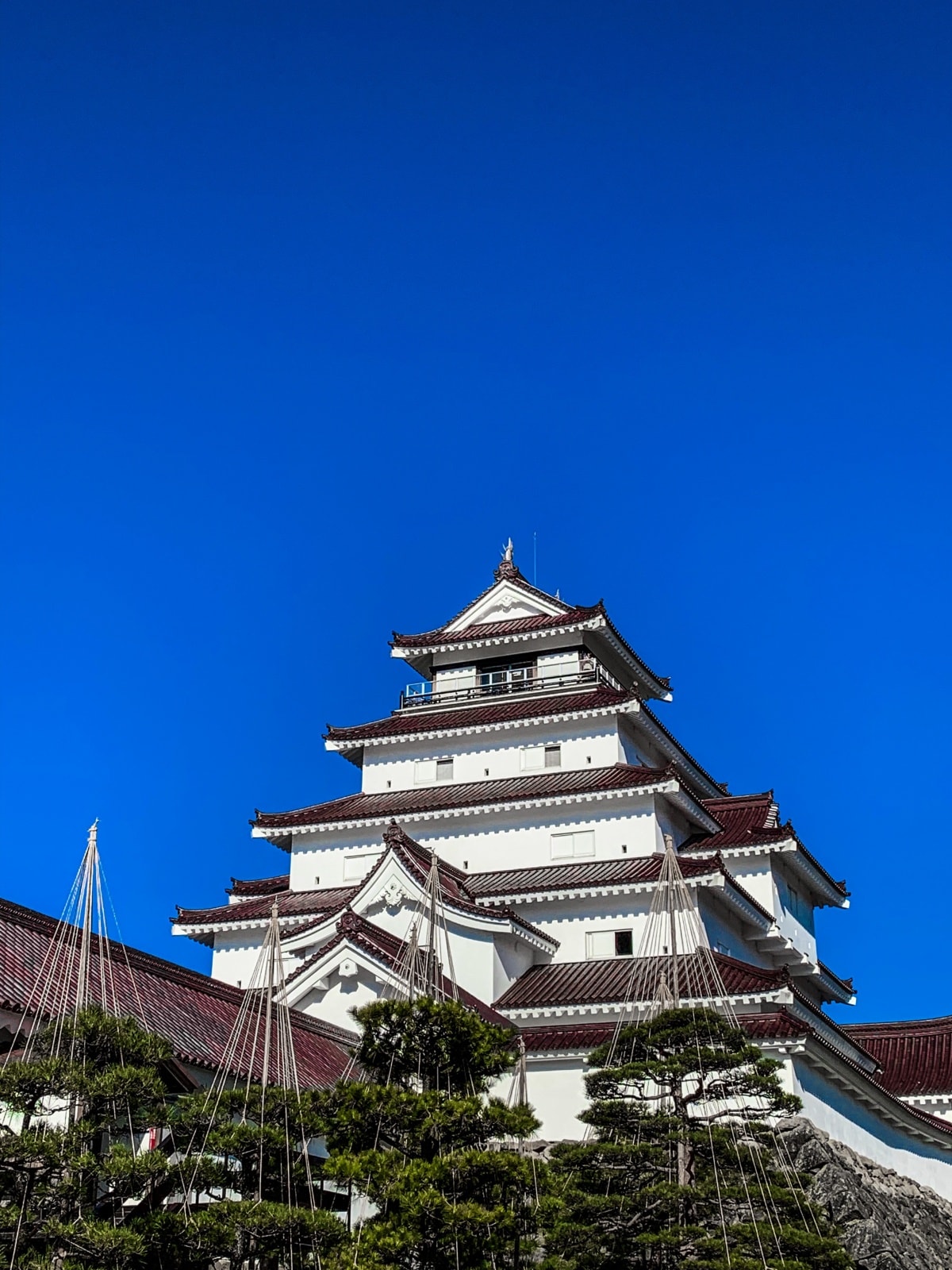
Tsuruga Castle
Also known as Aizuwakamatsu Castle, the red-tiled roof and white walls can be seen from almost anywhere in the city. Historically, the castle was one of the last holdouts of the Aizu clan during the Boshin War—the civil war that is sometimes referred to as Japan’s revolution—and was the site of a historic and decisive battle that helped shape the course of the country.
Now, the expansive castle grounds are open to the public and host a variety of seasonal events, like a lantern light up in winter, and cherry blossom viewing in spring. The castle itself has been reconstructed, and repurposed into a beautiful museum detailing the history and significance of samurai in the area. The top floor is a lookout that offers an incredible view of the surrounding town, and Mount Bandai in the distance.

Ouchijuku
To witness another side of history, you’ll have to head a bit further afield. About 40 minutes from Aizuwakamatsu by car, Ouchijuku is a traditional townscape tucked away in the mountains of Fukushima. This former post town was part of the Aizu-Nishikaido Trade Route, where travelers from Aizu to Nikko could find a place to rest along the way.
The town has been meticulously preserved to maintain its atmosphere from the Edo Period, with its unpaved central street lined with incredible thatched-roof buildings. There are a variety of shops and restaurants (be sure to try the negi soba—soba noodles eaten with a green onion as utensils!), but the true highlight of the area is the view of the town from the shrine in the hills behind the main strip.

Traditional Lodgings
Ouchijuku has traditional lodgings in which travelers can stay, which is quite a unique experience. If you plan to stay overnight in Aizuwakamatsu, consider renting a room at one of the traditional inns in Higashiyama. This onsen village is home to many, all of which boast their own natural hot spring baths. There’s nothing better than a relaxing soak, surrounded by the idyllic countryside of the mountains.
Chiba Prefecture
Thanks to Narita International Airport, many visitors to Japan start and end their journey in Chiba Prefecture. In addition to its convenient proximity to the airport, Chiba is home to some truly incredible landscapes, and beautiful temples beyond compare.

Mount Nokogiri
Overlooking the seaside of Chiba’s Boso Peninsula, Mount Nokogiri (literally “Saw Mountain”) is one of the best hiking spots in the area. The bare granite of the mountain is a testament to its history as a former quarry, and provided high-quality stones that were in high demand.
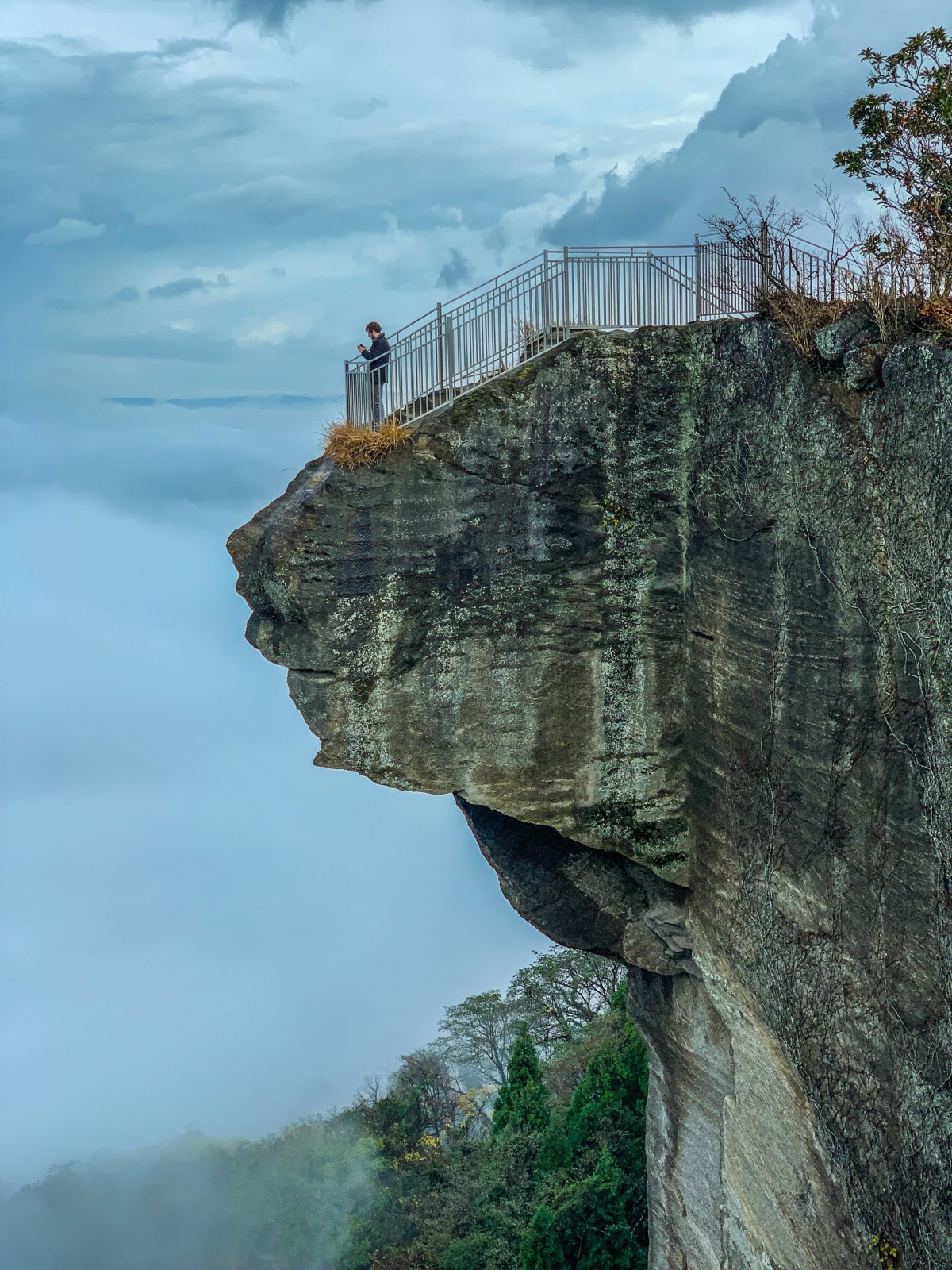
At the top of the hike there is the self-described “Hell Peak Point.” This jagged cliff juts out of the mountain, and though the edges are cordoned off by protective railings, a view down into the depths below is sure to shake the knees of even the most courageous hikers! On our visit it was a bit rainy, and the effect created by the clouds was like standing on a peak at the very top of the world. On clear days, Mount Fuji can be seen in the distance.

Hyaku Shaku Kannon
Known as Hyaku Shaku Kannon, this massive statue of the Buddhist goddess of love and mercy is another highlight of the hike up Mount Nokogiri. Although it looks ancient, it was actually carved in 1966, as a symbol of world peace and wish for safe travels. Towering at a height of 30 meters, it’s impossible not to feel dwarfed by this incredible carving.
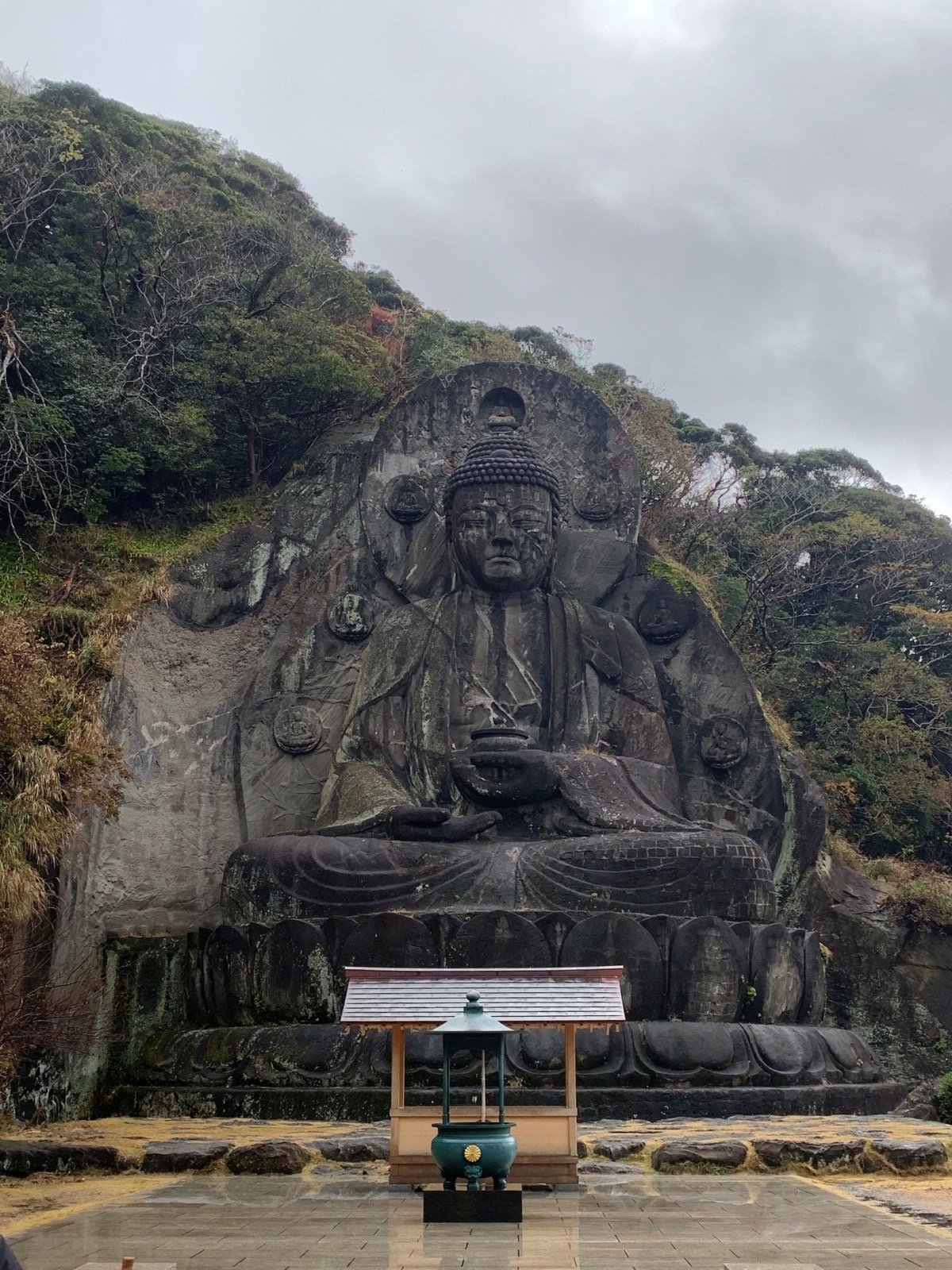
Daibutsu
Mount Nokogiri is home to the Nihon-ji Temple. Beautiful in its own right, what really sets this temple apart is it incredible Great Buddha (daibutsu in Japanese), carved out of granite directly from the mountainside in 1783. It is one of the largest statues of its kind; at 31 meters it towers over the Great Buddha in Kamakura (which is over 11 meters) at Kotokuin Temple, and the Great Buddha at Todai-ji, in Nara (which stands at 18 meters).
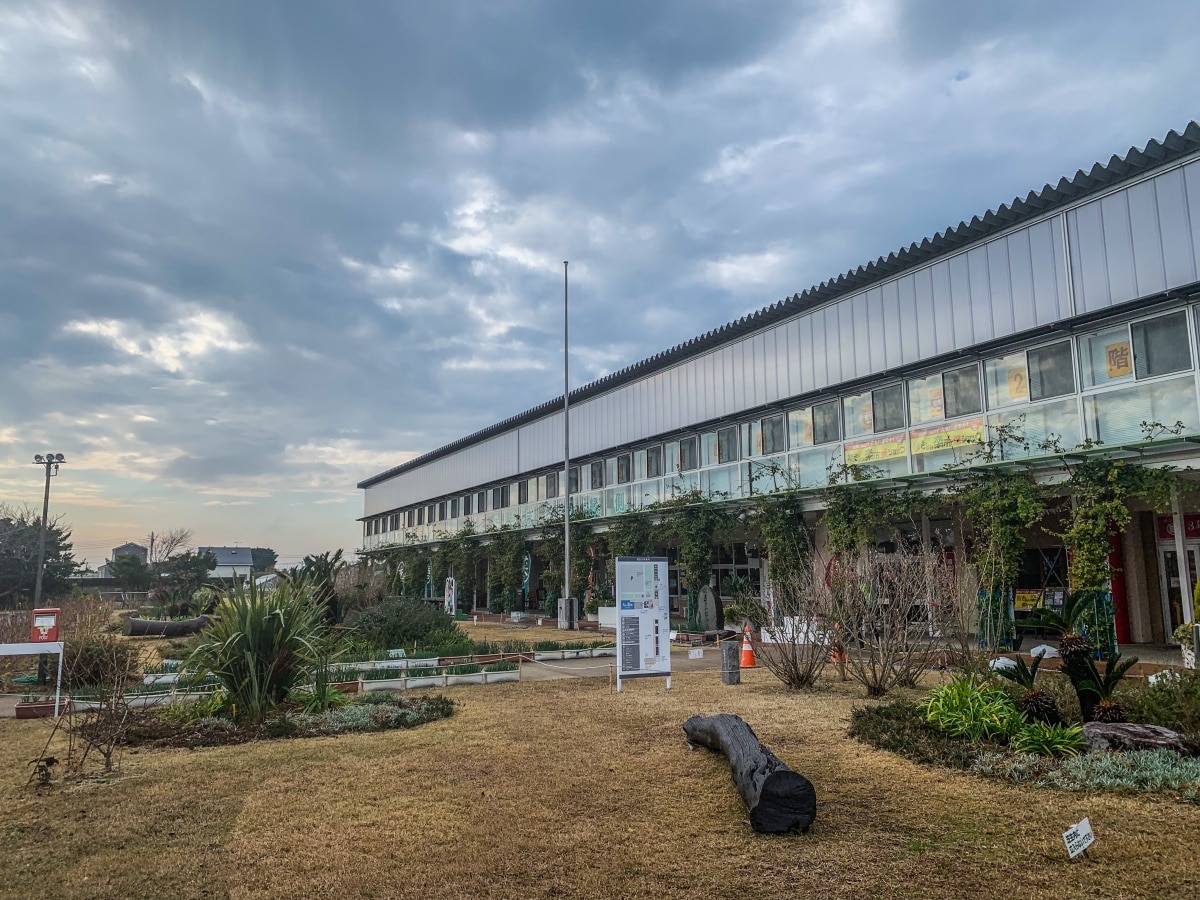
A Different Kind of Rest Stop
For visitors traveling to or from Mount Nokogiri, be sure to stop by the Michi-no-Eki Hota Shogakko. This roadside station is actually a repurposed elementary school (hence the name), and contains a shopping center that specializes in local goods and souvenirs, as well as restaurants, cafes and more! We recommend trying the brick oven pizza at Pizzeria Da Pe Gonzo; their pizza oven was actually made with stone from Mount Nokogiri.
The facility leans heavily into the school theme, with blackboards, cubbies, and even the end-of-class chime maintained to create an incredibly unique atmosphere you won’t find anywhere else! Visitors can also stay overnight here, since portions of the second floor have been converted into lodgings (while maintaining the incredible ambiance of an elementary school).
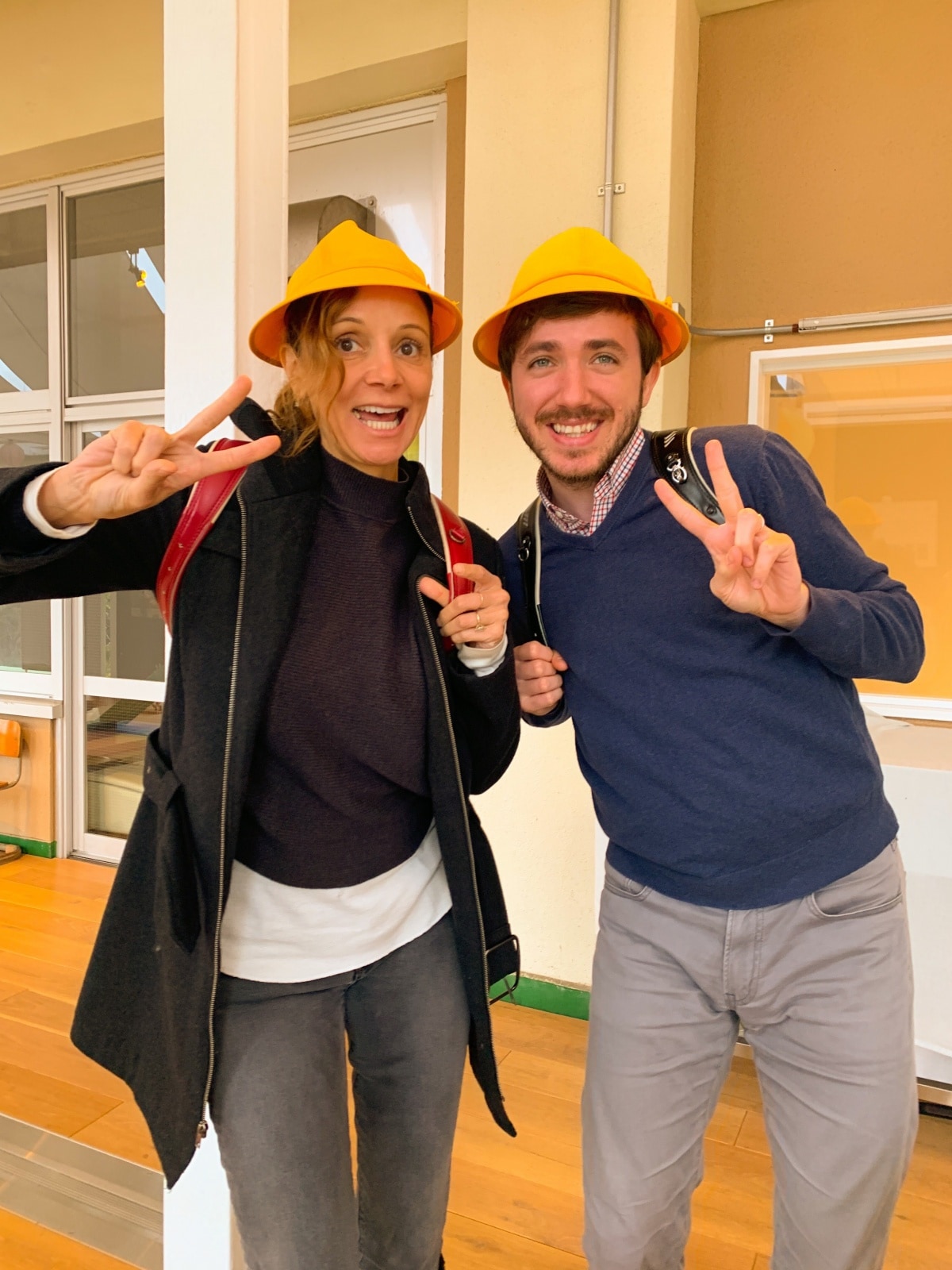
And everything we've covered up to this point is just the beginning! So what are you waiting for? Get out there and start exploring all the Kanto area has to offer.
This project was made in conjunction with the Kanto District Transport Bureau, and the cooperation of each of the prefectures mentioned in the piece.


